8 Enchanting Royal Palaces
We often think of enchanting royal edifices as just for fairytales. But the following romantic palaces exist in real life. They will fill you with wonder, and help you recall a time in history of opulence and luxury. While some of the palaces are world renowned, others may be new to you.
Unless you are in Disney World, palaces were originally built to house royalty, and are usually extravagant buildings surrounded by lush, landscaped gardens. We’ve selected our 9 favourites. Have a look and see which you recognise. Then find out a bit about each of the amazing residences where kings and queens used to hold court.
To learn more about these enchanting palaces and many more around the world download the Pinpoint Where app from the iOS App Store.
![]() to get Pinpoint Where
to get Pinpoint Where Download it from the iOS App Store

Palace of Versailles, Versailles, France 🇫🇷
Of course, the Palace of Versailles has to be at the top of the list of romantic royal edifices. No other than King Louis XIV, also known as the Sun King, had the enchanting palace built starting in 1634. Ever since, the former royal residence has held the public imagination because of its architectural grandeur and political intrigue. Most impressive is the Hall of Mirrors with a total of 357 mirrors bedecking 17 arches opposite the windows. During special occasions as many as 20,000 candles were lit to transform the hall into a “corridor of light.” Outside, the magnificent gardens completed the impression. No less than 372 statues, 55 water features, and 600 fountains served as sparkling backdrop for the enchanting place during the “Grand Siècle.”

Schönbrunn, Vienna, Austria 🇦🇹
Schönbrunn Palace was the main summer residence of the Habsburg rulers right outside Vienna. The name of the enchanting palace stems from the artesian well from which the court got its water. During the reign of Maria Theresa, Schönbrunn Palace became the glittering focus of court life as an imperial summer residence. Since then, it has played host to the leading kings, queens and statesmen of Europe. One very famous visitor was Wolfgang Amadeus Mozart, who performed for Empress Maria Theresa at Schönbrunn in 1772. Secondly, the British used parts of the palace for their administration following World War II. In 1955 the Austrian Republic got back on their feet and the palace converted back to a museum.
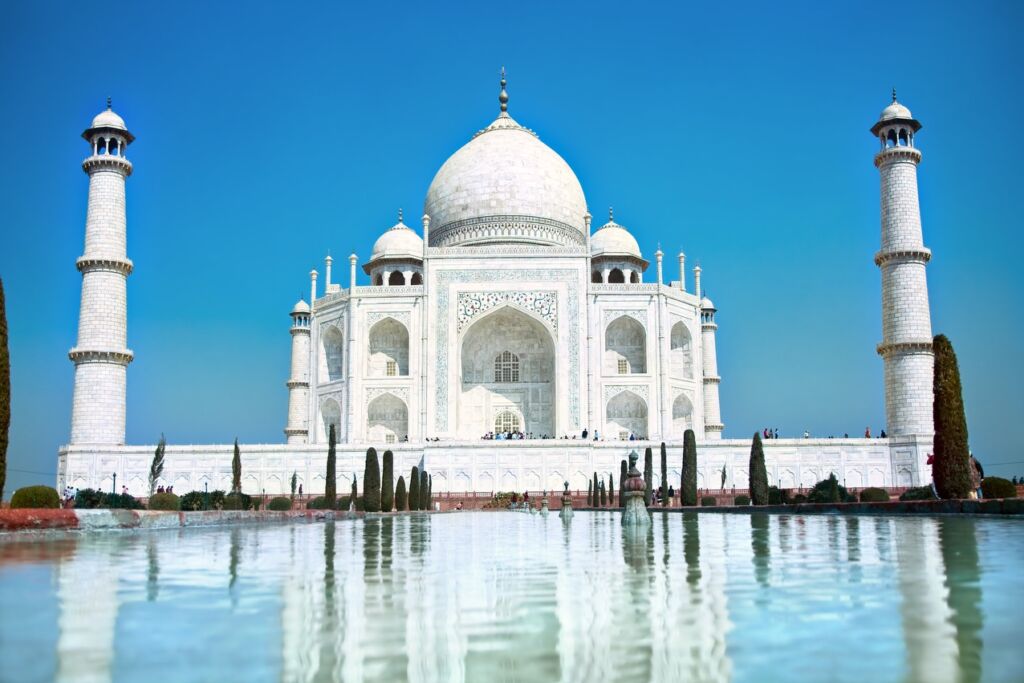
Taj Mahal, Agra, India 🇮🇳
The Taj Mahal is the world famous white marble mausoleum on the river Yamuna in the Indian city of Agra. Mughal Emperor Shah Jahan commissioned the enigmatic palace in 1632 to house the tomb of his favourite wife, Mumtaz Mahal. Since then, the Taj Mahal has been celebrated as one of the world’s most iconic monuments. In 1983, it became a UNESCO World Heritage site thanks to the impressive, yet harmonious proportions and flow of decorative elements. To this day, the building fascinates visitors in awe of the finest examples of Mughal architecture. Onlookers especially appreciate the play of solids and voids, concave and convex, as well as light and shadow. Aches and domes further increase the mysterious aesthetic, as does the blend of Indian, Persian, and Islamic styles.
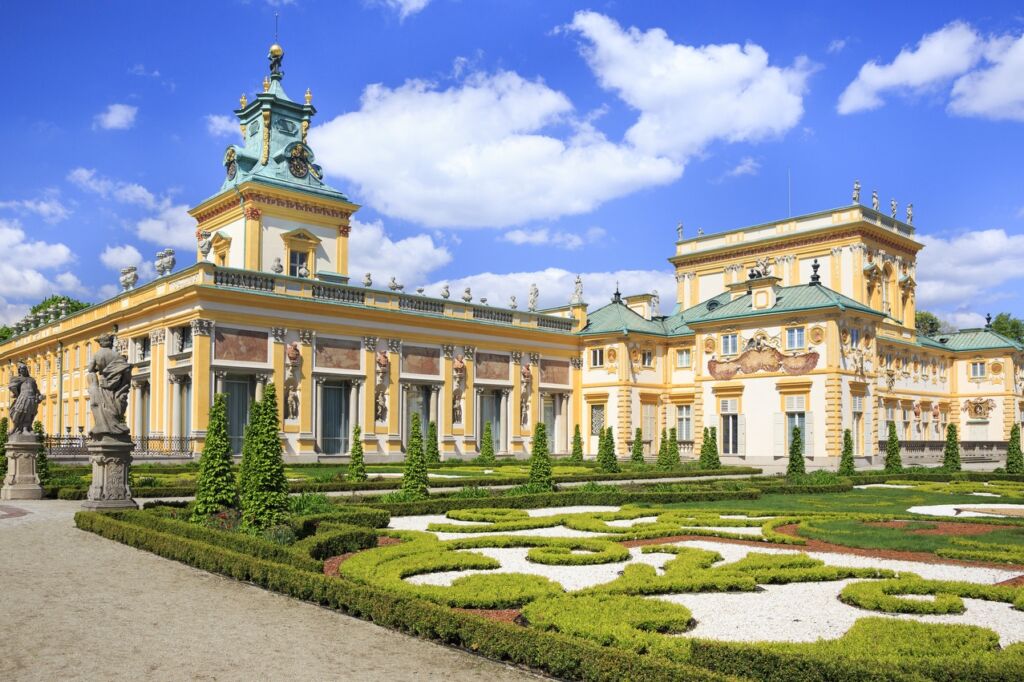
Wilanów Palace, Warsaw, Poland 🇵🇱
Wilanów Palace is a former royal palace located in the Wilanów district of Warsaw, Poland. Luckily, Wilanów Palace survived Poland’s partitions and both World Wars. As a result, the enchanting palace now serves as a great reminder of the culture of the Polish state before misfortune hit. In fact, it is one of Poland’s most important monuments untouched by destruction. Furthermore, one of its residents, Stanislaw Kostka Potocki, was enlightened especially for his time. In the early 19th century, he made the royal apartments of King Jan III Sobieski accessible to the public. Keep an eye out for the words ‘Cunctis patet ingressus’ on the palace floor. They signify that the palace and its collection are ‘open to all.’ In fact, the act was especially notable at a time when Poland ceased to exist because of the Russian/Prussian/Austrian partition.
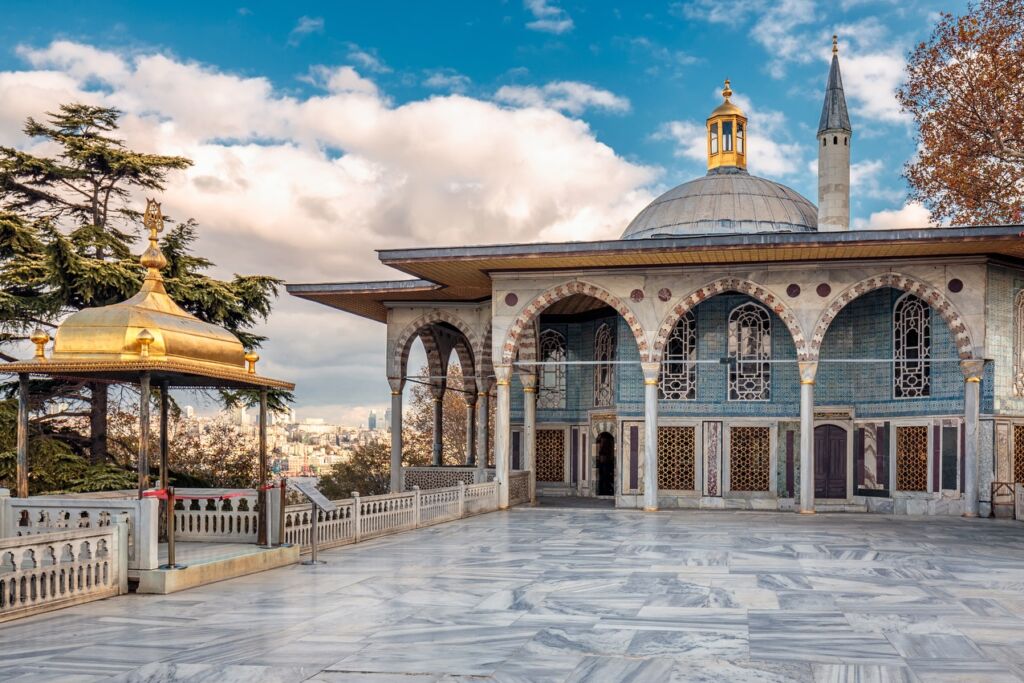
Topkapı, Istanbul, Turkey
Topkapı Palace is one of the world’s largest surviving palatial edifices. Sultan Mehmed II sponsored the construction between 1460 and 1478, a few years after Mehmet had conquered Constantinople. Thereafter, the palace served as the home of the Ottoman Sultans for almost four centuries. During the Ottoman empire, sultans, courtiers, concubines, and scheming eunuchs resided in the enchanting palace under a veil of intrigue. A visit to the palace’s opulent pavilions, jewel-filled Treasury and sprawling Harem gives a fascinating glimpse into their lives. For this reason, it is easy to believe that the Palace has more stories to tell than most museums combined.
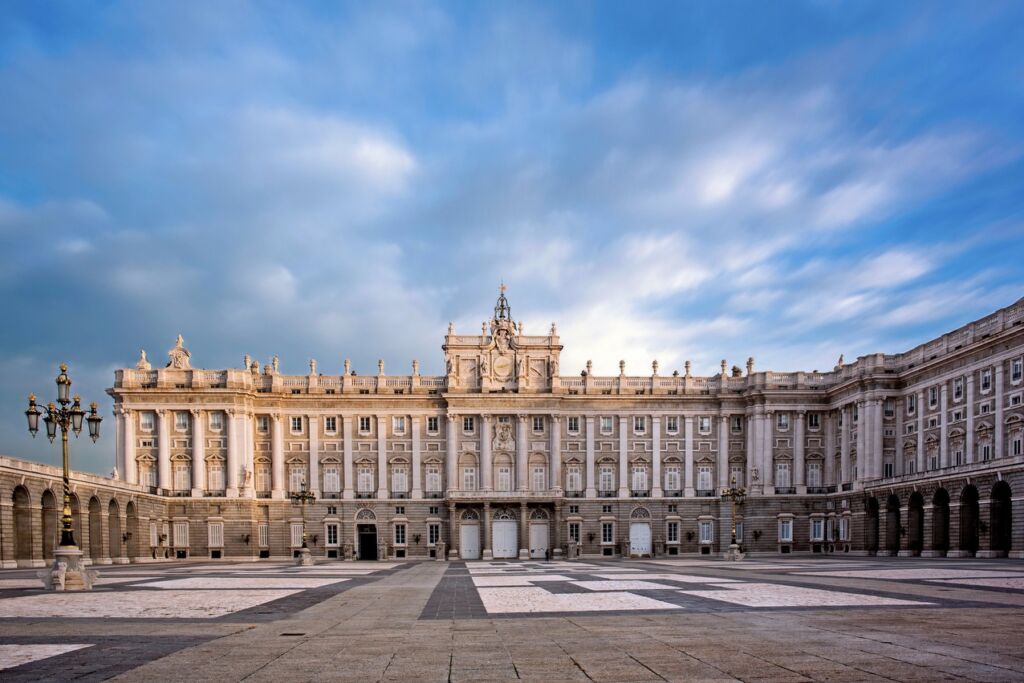
Royal Palace, Madrid, Spain 🇪🇸
Madrid’s Royal Palace takes us on a journey through the history of Spain. It stated out as the home to the Kings of Spain from Charles III to Alfonso XIII. Parts of the residence still function as official seat of the Spanish royal family to this day. Other parts are nowadays open to the public and used for state ceremonies. The site of the enchanting palace was originally a bygone Muslim-era fortress. In the late Middle Ages, the imposing Alcázar of Madrid provided a safe for the royal treasure. Besides that it was also a residence to the Trastámara monarchs. Nowadays, the interior of the palace is notable for its wealth of art and the use of exquisite materials. Last but not least, paintings by famous artists including Caravaggio, Goya, and Velázquez delight visitors from around the world.

Mysore Palace, Karnakata, India 🇮🇳
The Mysore Palace is also referred to as the Amba Vilas Palace. The second-most visited romantic palace in India after the Taj Mahal, looks very distinct. This is in large part thanks to its architectural amalgamation of Hindu, Mughal, Rajput and Gothic Styles. Yaduraya, the founder of the Wadiyar dynasty in the 14th century, commissioned the old fort’s first palace. Since then, various rulers had the palace demolished and reconstructed several times over the centuries. In total, the Palace now houses 12 temples inside. Of course, it is world famous for its structure, temples, museums and art galleries. In addition, visitors from all over the world come for the festivities that take place during the period of Dasara. Because of its grandeur, it is also a stunning honeymoon destination for couples taking an interest in architecture and history.
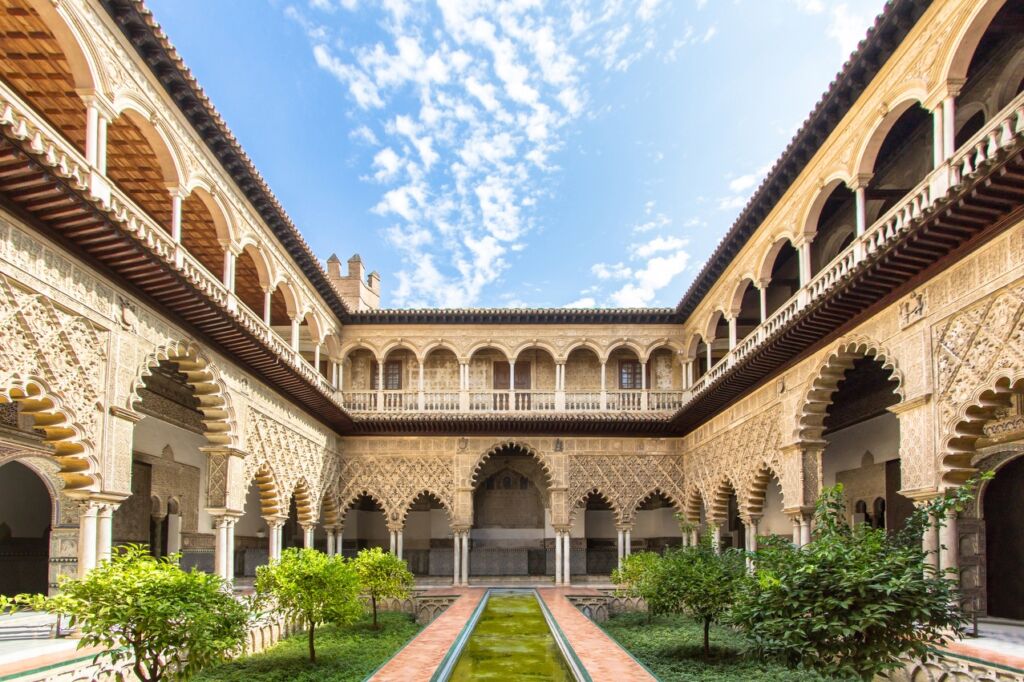
Royal Alcázar, Seville, Spain 🇪🇸
Christian king Peter of Castile originally commissioned the royal palace Royal Alcázars of Seville. Nowadays, it is the oldest active royal palace in Europe. This means that the upper stories of the Alcázar are still occupied by the royal family when they visit Seville. In 1987, the enchanted place became a UNESCO as a World Heritage Site, along with the adjoining Seville Cathedral and the General Archive. Since then, the iconic building has become known as a preeminent example of Mudéjar style on the Iberian Peninsula, combining Romanesque, Gothic, and Renaissance elements. In recent years, the iconic site has also served as a perfect backdrop for numerous cinematic endeavours leveraging the seductive power of its halls, courtyards, and fountains.
If you enjoyed this virtual journey through enigmatic palaces, download the mobile app “PinPoint Where.” Highly engaging, it allows you to check whether you recognize the most amazing sites in hundreds of categories. Playing your way through the app, you get a great overview for each place with links to pertinent details.